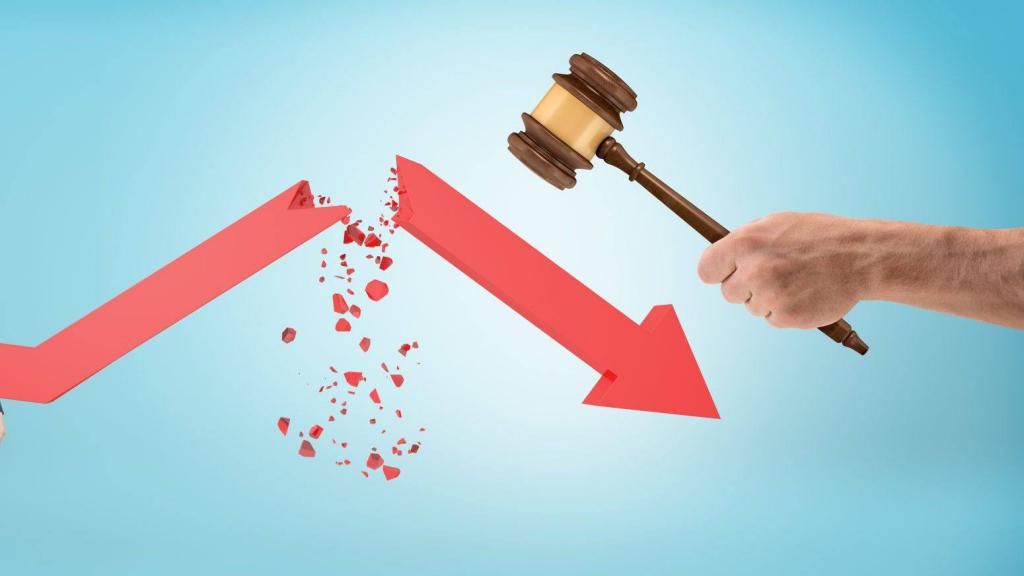This is not the first year that the government has been deciding on the fate of the funded pension system. At the moment, a moratorium applies to her. To understand what the “freezing” of the funded part of the pension means and how it can affect future pensioners, you need to study the innovations in the pension system as a whole and figure out why a moratorium is needed.

Will the funded part of the pension or not
Since 2002, pension reform has been carried out in Russia, as a result of which the pension began to consist of different parts, namely:
- insurance;
- funded.
These innovations concerned only citizens who were born after 1967. The funded part was originally planned to be allocated from the personal funds of future pensioners. It should have depended on the length of service, as well as the size of the salary. The use was supposed to be implemented as follows:
- by transferring money to NPF, which will begin to increase it and assign interest on financial transactions;
- investment in securities, mortgage programs and bonds;
- receipt in shares or a lump sum, as well as transfer in order to improve health or housing conditions.
However, the difficult economic situation in the country forced to make temporary adjustments to the legislation, namely, to introduce a moratorium on the funded part of the pension. Currently, this measure has been extended until 2020. Until that time, with few exceptions, it will not work to use the accumulated money.

Freezing a funded pension
A moratorium means the impossibility of receiving funds from the funded part of the pension. At the same time, this ban applies not only to the state units of savings, but also to those funds that the Russians put aside in NPFs. It turns out that those citizens who are going on a well-deserved rest at present, will not be able to take advantage of the funded part of the pension for at least another two years.
Stages
Pension reform, in which the pension was divided into insurance and funded parts, began at the beginning of the zero. But the moratorium on the funded part of the pension was first introduced in 2014. It was from this time that the Russians lost the opportunity to use their own funds. Phased decisions in this regard were taken as follows.
- In 2014, it was supposed to introduce freezing as a one-time measure.
- In 2015, it was extended.
- In 2016, they decided to renew for 3 years already.
- In 2018, they again were not able to abandon this measure and increased the time already by 2020.
These funds were used to stabilize the situation with pensions, as well as the financial system of the country as a whole.
Where are the funds of the funded part
The government speaks of what “freezing” of the funded part of a pension means only a measure in which money is allocated to insurance payments for people already on well-deserved rest in old age. However, this event does not mean that the money was simply withdrawn from the population. The measure is temporary, and all the savings are promised to be returned to the accounts of pensioners, and in indexed form for the entire period of the moratorium. At the same time, the exact date of the abolition of the freeze, when the money can finally be used, is not disclosed.

The meaning of freezing
During the reform, problems arose due to the fact that 6% of the contributions that were transferred to personal accounts, citizens began to transfer to non-state pension funds (in short, non-state pension funds). Thus, money began to go out of the turnover of the PFR, which is why the volume of finance in this state structure was significantly reduced.
The deficit of pension money became the reason that there was simply nothing to pay off with current pensioners. At the same time, regular or lump-sum payment from the funded part of the pension to people who have just left on a well-deserved rest has also become impossible. The “frozen” money went not only to the main payment of pensions. They also had enough to carry out various anti-crisis measures and maintain the financial situation of the country.
2014–2016 moratorium
At the beginning of December 2013, a law was passed on amending certain aspects regarding the provision of pensions No. 351-FZ. According to him, contributions that were sent by citizens to personal accounts, by default, began to be transferred to the insurance part of the pension.
In December 2014, Law No. 410-FZ entered into force, which extended this measure to 2015. Officially, officials called the reason for this decision as an audit of the activities of APFs and the UK. But many analysts are inclined to believe that the only real reason was the attempt to stabilize the country's budget at the expense of pension funds of citizens. The following 2016 was not an exception to this “rule”, when a similar law No. 424-FZ was adopted.

2017 Moratorium
The NPF Association made a proposal to unfreeze the funded part of citizens' pensions, but with a reduction in the corresponding percentage. According to the organization, thanks to this, not only those who are entitled to pay the funded part of the pension would transfer money. This could help balance the distribution system without destroying funded pensions in general.
The proposal was supported by the Ministry of Economic Development, and in 2017, this structure proposed reforming the system and again enabling citizens to form their own pension funds. The following was assumed:
- self-transfer of money from wages directly to NPFs;
- funds paid by the employer should be sent to the FIU.
However, the Government did not “hear” the arguments of the Ministry of Finance, and the percentage of the funded part of the pension remained “frozen”. There is an opinion that the Government will not abandon such a measure until other ways to reduce the costs of the state budget are found.
Extension until 2019
The decision to extend the moratorium until 2019 was made in 2016. And in mid-2017, the IMF recommended that the country reform the pension system and increase the retirement age of men and women. The decisions that followed this caused a great resonance in society, and the question of funded pension receded to another plane.

The impact of the moratorium on the amount of future retirement
The moratorium on the funded part of the pension, of course, affected the volume of benefits. The current situation is as follows.
- Before the introduction of this measure, citizens could place money in NPFs, that is, invest them in various projects.
- The profit from these financial transactions depends on various factors, including the professionalism of NPF employees.
- After the moratorium, profitability approaches zero. And if we take into account the level of inflation in Russia, the result of investments in non-state pension funds may even be minus.
Thus, if the moratorium on the funded part of the pension is extended in the future, this can significantly undermine the already small percentage of citizens' trust in the Government. In addition, additional difficulties are also at risk in the domestic financial market.
What will happen to the funded part in the future

The law on the funded part of the pension, in accordance with which it was decided to freeze it, has already proved its inefficiency. In this regard, the search for different ways to develop the system does not stop. Possible innovations that are being actively discussed at present include the following:
- impose obligations on the employer to transfer the funded part of the pension after the employee has expressed his will;
- the ability to form this part of the pension voluntarily;
- make a contribution in the range from 0 to 6 percent.
Since citizens will have to bear a significant burden, those who decide to form the funded part of the pension are invited to provide the following exemptions:
- tax deduction;
- the possibility of using the funds ahead of schedule (although a lump sum payment from the funded part of the pension in this case can be only 20 percent of the amount) or in the presence of difficult life circumstances (for example, in case of illness).

NPF
The freezing of funds also affects the activities of organizations where the funded part of the pension is located, that is, NPFs. The government announced that their viability is being tested in this way. But in fact, to stay afloat in the created conditions is quite difficult. Therefore, some funds may go bankrupt. And in this case, a negative result will affect not only the company itself, but, of course, investors who will lose income.
Conclusion
Currently, the question of when the moratorium on the funded part of the pension will be lifted remains open. The fact that the situation will continue in 2020 clearly does not add credibility to the state bureaucracy. At the same time, restrictions have negative consequences in the domestic financial market. This is due to the fact that investing money in the foreign market is prohibited. Therefore, the activities of non-state pension funds have significantly decreased. And this factor in the future may, in turn, negatively affect the interest rates of citizens.
